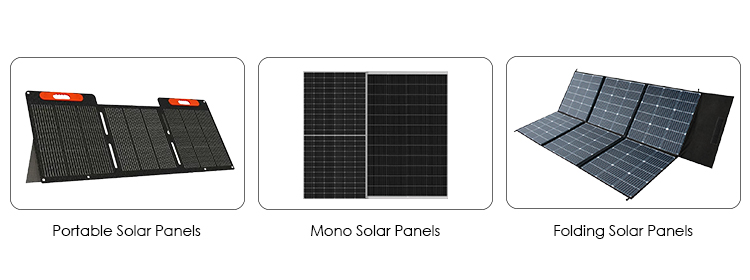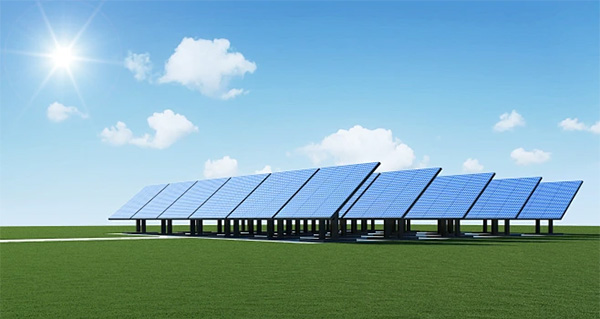Power of Solar Energy Storage
The rapid growth of solar energy adoption across industries underscores the urgent need for effective energy storage solutions. As businesses and individuals continue to embrace renewable energy, solar energy storage systems are becoming a critical component of sustainable energy strategies. EnterSolar explores the professional advantages of solar energy storage, highlighting how it can transform energy management, enhance reliability, and drive economic benefits.

One of the primary advantages of solar energy storage is the increased energy independence it provides. Businesses can generate and store their own electricity, reducing reliance on external energy suppliers. This independence is particularly beneficial in regions with unstable electricity grids or frequent power outages. By having a reliable source of stored energy, businesses can maintain continuous operations even during grid failures, ensuring operational security and minimizing downtime.
2. Cost Savings and Peak Shaving.
Energy storage systems enable businesses to engage in peak shaving, a practice that involves using stored energy during periods of high electricity demand when grid electricity prices are typically higher. By offsetting peak demand with stored solar energy, businesses can significantly reduce their electricity bills. Additionally, energy storage can help avoid demand charges, which are fees based on the highest amount of power drawn during peak periods. Over time, these cost savings can make a substantial difference to a company’s bottom line.
3. Maximizing Solar Energy Utilization.
Solar panels often produce more electricity than is immediately needed, especially during peak sunlight hours. Without storage, this excess energy is typically sent back to the grid, often at lower compensation rates than the cost of drawing energy from the grid during off-peak hours. Energy storage allows businesses to capture and use this surplus energy, maximizing the utilization of their solar installations and enhancing the overall return on investment (ROI).
4. Environmental Impact and Sustainability Goals.
Storing solar energy aligns with broader environmental and sustainability goals by reducing the reliance on fossil fuels and decreasing carbon emissions. By using stored solar power instead of drawing from the grid, businesses can lower their carbon footprint and contribute to global efforts to combat climate change. This commitment to sustainability can also enhance a company’s reputation, appealing to environmentally-conscious consumers, investors, and partners.
5. Grid Stabilization and Support.
Energy storage systems contribute to grid stability by providing ancillary services such as frequency regulation and voltage support. During periods of high demand, stored energy can be released to the grid, helping to balance supply and demand. This support is particularly valuable as the penetration of intermittent renewable energy sources, like solar and wind, increases. By stabilizing the grid, energy storage systems help integrate more renewable energy, facilitating a cleaner and more resilient energy infrastructure.

The field of energy storage is rapidly evolving, with continuous advancements in battery technology leading to higher efficiency, longer lifespans, and reduced costs. Innovations such as solid-state batteries and improved lithium-ion chemistries are poised to enhance the performance and affordability of solar energy storage systems, making them more accessible to businesses of all sizes.
2. Integration with Renewable Energy Microgrids.
The integration of solar energy storage with renewable energy microgrids represents a transformative trend. Microgrids, which can operate independently or in conjunction with the main grid, offer enhanced energy resilience and sustainability. By combining solar power generation, off-grid solar inverters, storage, and intelligent energy management, microgrids provide a scalable solution for businesses aiming to achieve greater energy autonomy and environmental sustainability.
3. Blockchain and Energy Trading.
Blockchain technology is emerging as a game-changer in the energy sector, enabling decentralized energy trading and peer-to-peer transactions. Businesses with solar energy storage systems can participate in local energy markets, selling excess stored energy to other consumers or the grid. This decentralized approach can create new revenue streams and promote more efficient and resilient energy systems.
The Fundamentals of Solar Energy Storage
Solar energy storage involves capturing the excess energy generated by solar panels during peak sunlight hours and storing it for later use. This process typically utilizes batteries or other storage technologies, allowing stored energy to be deployed when sunlight is insufficient, such as during the night or cloudy days. By integrating energy storage solutions, businesses can optimize their energy usage, reduce dependency on the grid, and achieve greater energy efficiency.
Advantages of Solar Energy Storage
1. Enhanced Energy Independence and Security.One of the primary advantages of solar energy storage is the increased energy independence it provides. Businesses can generate and store their own electricity, reducing reliance on external energy suppliers. This independence is particularly beneficial in regions with unstable electricity grids or frequent power outages. By having a reliable source of stored energy, businesses can maintain continuous operations even during grid failures, ensuring operational security and minimizing downtime.
2. Cost Savings and Peak Shaving.
Energy storage systems enable businesses to engage in peak shaving, a practice that involves using stored energy during periods of high electricity demand when grid electricity prices are typically higher. By offsetting peak demand with stored solar energy, businesses can significantly reduce their electricity bills. Additionally, energy storage can help avoid demand charges, which are fees based on the highest amount of power drawn during peak periods. Over time, these cost savings can make a substantial difference to a company’s bottom line.
3. Maximizing Solar Energy Utilization.
Solar panels often produce more electricity than is immediately needed, especially during peak sunlight hours. Without storage, this excess energy is typically sent back to the grid, often at lower compensation rates than the cost of drawing energy from the grid during off-peak hours. Energy storage allows businesses to capture and use this surplus energy, maximizing the utilization of their solar installations and enhancing the overall return on investment (ROI).
4. Environmental Impact and Sustainability Goals.
Storing solar energy aligns with broader environmental and sustainability goals by reducing the reliance on fossil fuels and decreasing carbon emissions. By using stored solar power instead of drawing from the grid, businesses can lower their carbon footprint and contribute to global efforts to combat climate change. This commitment to sustainability can also enhance a company’s reputation, appealing to environmentally-conscious consumers, investors, and partners.
5. Grid Stabilization and Support.
Energy storage systems contribute to grid stability by providing ancillary services such as frequency regulation and voltage support. During periods of high demand, stored energy can be released to the grid, helping to balance supply and demand. This support is particularly valuable as the penetration of intermittent renewable energy sources, like solar and wind, increases. By stabilizing the grid, energy storage systems help integrate more renewable energy, facilitating a cleaner and more resilient energy infrastructure.
Strategic Implementation of Solar Energy Storage
- Assessing Energy Needs and Load Profiles: Effective implementation of solar energy storage begins with a thorough assessment of a business’s energy needs and load profiles. Understanding when and how energy is consumed allows for the design of a storage system that meets specific operational requirements. This assessment helps determine the appropriate size and capacity of the storage system, ensuring it can handle peak loads and provide sufficient backup during outages.
- Choosing the Right Storage Technology: Several energy storage technologies are available, including lithium-ion batteries, flow batteries, and thermal storage systems. Each technology has its own advantages and suitability depending on the application. Lithium-ion batteries, for example, are popular for their high energy density and efficiency, while flow batteries offer longer lifespans and scalability. Businesses should evaluate their energy requirements and budget to select the most appropriate storage technology.
- Integrating with Energy Management Systems: Integrating energy storage with advanced energy management systems (EMS) allows businesses to monitor and control energy usage in real-time. EMS can optimize the charging and discharging of batteries based on current and forecasted energy demands, grid conditions, and electricity prices. This integration ensures that energy storage systems operate efficiently and effectively, providing maximum economic and operational benefits.
- Leveraging Financial Incentives and Programs: Governments and utilities often offer financial incentives and programs to support the adoption of solar energy storage. These incentives can include tax credits, grants, rebates, and favorable financing options. Businesses should explore available programs to reduce the initial investment costs of solar inverters and enhance the financial viability of their energy storage projects.

Future Trends in Solar Energy Storage
1. Advancements in Battery Technology.The field of energy storage is rapidly evolving, with continuous advancements in battery technology leading to higher efficiency, longer lifespans, and reduced costs. Innovations such as solid-state batteries and improved lithium-ion chemistries are poised to enhance the performance and affordability of solar energy storage systems, making them more accessible to businesses of all sizes.
2. Integration with Renewable Energy Microgrids.
The integration of solar energy storage with renewable energy microgrids represents a transformative trend. Microgrids, which can operate independently or in conjunction with the main grid, offer enhanced energy resilience and sustainability. By combining solar power generation, off-grid solar inverters, storage, and intelligent energy management, microgrids provide a scalable solution for businesses aiming to achieve greater energy autonomy and environmental sustainability.
3. Blockchain and Energy Trading.
Blockchain technology is emerging as a game-changer in the energy sector, enabling decentralized energy trading and peer-to-peer transactions. Businesses with solar energy storage systems can participate in local energy markets, selling excess stored energy to other consumers or the grid. This decentralized approach can create new revenue streams and promote more efficient and resilient energy systems.
